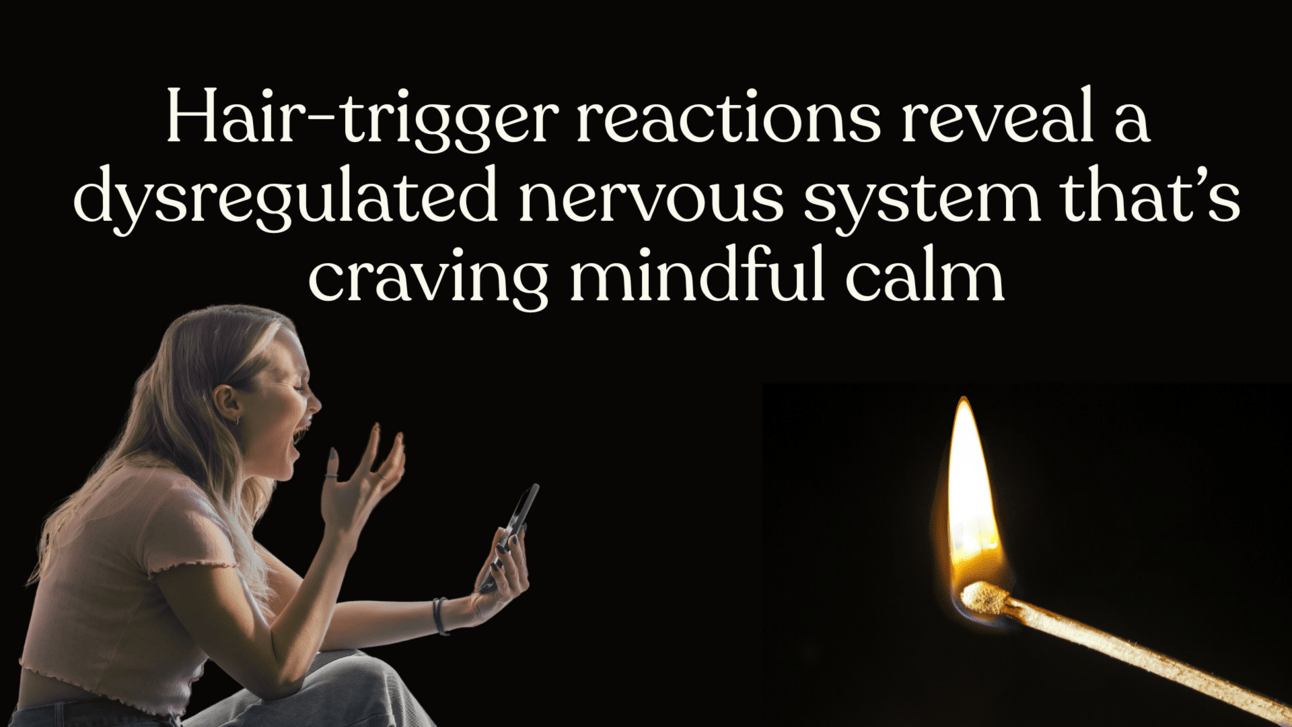⚡ Mastering Hair-Trigger Reactions
🔎 Where Do Hair-Trigger Reactions Come From?
💡 Sol Bites: Science-Backed Strategies to Reduce Reactivity
📹 Video Bite: Emotional Regulation with Ekta Hattangady
🦉 Words of Wisdom
Welcome to Wisdom & Sol and to the 567 people who have joined us since last week! If you haven’t subscribed, join our community of 52,704 intelligent, curious folks who want to boost their emotional well-being by subscribing here.
We recently heard from a reader who suggested that we cover hair-trigger emotions. Done! Thank you for the suggestion—and we encourage everyone to tell us what emotions you'd like to learn more about.
TL;DR
Hair-trigger emotional reactions are often rooted in nervous system dysregulation, past trauma, or chronic stress. They’re not just about “overreacting”—they’re signs that your brain thinks you’re in danger. Regulating your nervous system through breathwork, mindfulness, cognitive restructuring, and other polyvagal-informed strategies (like grounding) can help reduce reactivity over time. Practice and patience are key.

Mastering Hair-Trigger Reactions
Have you ever lashed out at somebody then felt ashamed or sorry a minute later? Or have you been in a situation where you’ve been gripped by a flood of worry or fear disproportionate to the issue you’re facing and you make a rash decision as a result?
That fast, violent, and often nonsensical response is what most people call a "hair-trigger" reaction. It can harm your relationships and impact your work and self-esteem. But they're actually not a flaw in your character. They're a defense mechanism you’ve picked up, often at a young age or under chronic stress.
Understanding neuroscience can give you a set of tools to minimize hair-trigger responses. The idea is not to suppress your feelings, but to calm the systems that create those hair-trigger responses in the first place.

Where Do Hair-Trigger Reactions Come From?
The amygdala is the danger detection center of your brain. When it perceives danger (real or perceived) it sends signals that can override rational thinking (the prefrontal cortex) and trigger immediate survival responses: fight, flight, freeze, or fawn.
When you're stressed, chronically anxious, or have been traumatized, the amygdala becomes hyperactive. It over-estimates tiny threats as much larger ones—something psychologist Daniel Goleman described as “amygdala hijack.”
Sol Bites: Science-Backed Strategies to Reduce Reactivity
1. Breathwork to Calm the Nervous System
Slow, diaphragmatic breathing activates the vagus nerve, shifting the body out of fight-or-flight and into parasympathetic (rest-and-digest) mode. According to a 2017 Frontiers in Psychology study, slowing down your breathing reduces emotional reactivity by a significant amount and improves mood regulation.
Do this: Inhale for 4 counts, exhale for 6–8 counts. Repeat for 2–5 minutes.

2. Mindfulness and Interoception
Mindfulness helps to build awareness of your internal state before it manifests externally. Interoception, or awareness of internal bodily states, can help you become aware of reactivity early.
A 2015 meta-analysis in JAMA Internal Medicine found that mindfulness-based stress reduction (MBSR) interventions were effective in reducing anxiety, emotional reactivity, and stress.
Practice this: Do regular mental body scans (check in with every body part and note how it’s feeling), take a mindful walk in nature or even just around the block, or when you’re tense, simply pause to feel your feet fully on the ground.
3. Cognitive Reappraisal ("Name it to Tame it")
Labeling what you're feeling—such as "I feel frightened" or "I feel disrespected"—reactivates your rational brain (prefrontal cortex) and reduces amygdala activity.
Participants in a 2007 UCLA study found that those who used “emotion naming” showed improved emotion stabilization in their MRIs.
Try this: Mentally note the emotion you're feeling, then ask yourself: "What might be beneath this?"

4. Polyvagal-Informed Movement
Slow movements like yoga, stretching, or shaking may release tension and return your body to a managed state. In fact, a 2014 Journal of Clinical Psychology study suggested that trauma-sensitive yoga reduced PTSD and emotional dysregulation symptoms.
Do this: To reset your nervous system, try slow neck rolls, spinal twists, or even bounce or shake your limbs.
5. Therapeutic Support and Trauma-Informed Care
When hair-trigger reactions stem from deeper trauma, working with someone trained in modalities like EMDR (Eye Movement Desensitization and Reprocessing) or Somatic Experiencing can be life-changing. The approaches help integrate old survival patterns and reduce reactivity at the root.
Rewiring Your Emotional Responses
Hair-trigger reactions aren't a flaw. They're signs your nervous system is trying to keep you safe. To make them less frequent, you don’t need to eliminate negative feelings altogether, just establish sufficient safety in your body and brain so you can choose how to react rather than doing it impulsively.
With awareness, practice, and the right tools, you can reroute your system to halt, observe, and act with greater calm and clarity.
Don’t let a bad mood burn bridges—learn the secret to why blow ups happen and find the fix!
Video Bite
Sol TV Creator, Ekta Hattangady shares a mind-body technique to regulate your emotions, feel grounded and connect to your resilience.
Words of Wisdom
Between stimulus and response, there is a space. In that space is our power to choose our response. In our response lies our growth and our freedom.
Help us make this newsletter even better for you! Was this issue useful? What would you be excited to read about next? Reply to this email with your thoughts and suggestions. We read every response!
Want More: Tools to Regulate Emotions
This Edition’s Sponsor: 1440 Media
Fact-based news without bias awaits. Make 1440 your choice today.
Overwhelmed by biased news? Cut through the clutter and get straight facts with your daily 1440 digest. From politics to sports, join millions who start their day informed.
Along the Same Lines…
We love you,
Mona & The Sol TV Team ❤️
Lastly, some housekeeping…
If you can't find this newsletter, check your spam folder. If it’s there, mark it as “not spam.”
Whitelist our email. Add our email address [email protected] to your contact list or your Primary inbox in Gmail.




